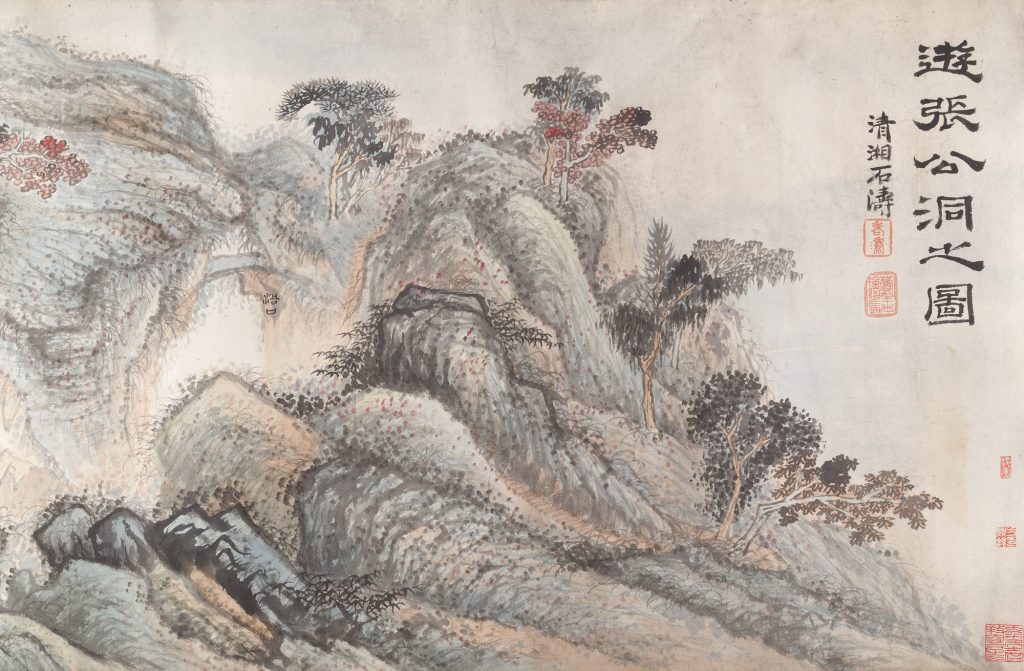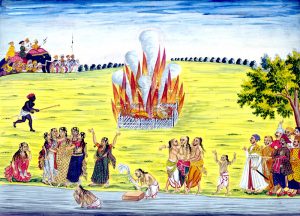With every bad situation there is a good side, but with every good situation there is a bad side.
Everyone has heard some variation of this cliché before, but where does this idea come from? It comes from an ancient Chinese philosophy that has influenced China since the sixth century BCE, namely, the belief system of Daoism.

The Chinese philosophy of Daoism is the “teaching of the way.” The Dao is the way in which things come together while constantly changing. This idea reflects an inherently Chinese belief that change is fundamental to life. The hexagrams are the correlative relationships that symbolize the patterns of change in Daoism. They are contradictory elements but are necessary for the flow of reality. This is where the concept of yin and yang comes from. Hexagrams are figures that are made up of six lines, with broken lines representing yin and the solid lines representing yang. Yin and yang is the principle of all things that exist, that all things are inseparable and contain contradictory opposites. Water/fire, earth/heaven, wind/thunder, hot/cold, are all examples of these inseparable opposites. One is not superior to the other, and an increase in one brings a decrease in the other. Harmony is achieved by complete balance between the two opposites.1

Daoism was a response to the disorder of the late Zhou Dynasty. Although it was a time of political distress, it led to people reflecting on roles of humans in society. Some wanted to reconstruct the political and social order of China, such as Confucianism, while others wanted to explore individual peace separate from society, such as Daoism.2
The Daodejing contains the most fundamental teachings of Daoism. The oldest texts from the Daodejing date back to the 4th Century B.C.E. It is where the concept of yin and yang comes from. It also teaches that humans should not tamper with the flow of reality, also known as wu-wei or “effortless action.” The Daodejing teaches that wu-wei should guide people’s lives. When something happens that may seem unfair, people should remember that the way of heaven or dao of tian never misses anything or leaves anything undone. In other words, everything happens for a reason and nothing happens incompletely.3

Laozi is credited with founding Daoism. He is veiled in mystery, since there is no solid record of Laozi ever existing. Some say he lived in sixth century B.C.E.; however, there is no record of a man named Laozi as the founder of Daoism. Laozi means “Old Master,” and he is believed to have written the Daodejing, but there is much debate about whether or not the Daodejing was written by one person or many. Regardless of all the speculation surrounding Laozi, he is still venerated as a philosopher by Confucians, and he was even worshiped as an imperial ancestor during the Tang Dynasty 618–907 C.E.4
Daoism influenced Chinese arts. Some of the oldest spiritual books received their influence from the pictures of Daoist temples. Daoist illustrations also influenced the desire to draw technical drawings, so it influenced a high level of botanical and mineralogical drawings. Calligraphy also has its influence from Daoism; Wang Xizhi is known as one of the greatest calligraphers of all time.5
Daoism focuses on ways of living that is separate from society. It teaches people to just let life happen, since there is a reason for everything that happens. Daoism influenced peoples’ thinking when it first emerged, and even now in modern society. Taiwan is where Daoism is still widely popular, and many temples have been restored to maintain the practice of the way.6
- Internet Encyclopedia of Philosophy, 2016, s.v. “Daoist Philosophy” by Ronnie Littlejohn ↵
- Jerry Bentley, Herbert Ziegler, and Heather Streets Salter, Traditions & Encounters: A Brief Global History, Volume 1, 3 edition (McGraw-Hill Higher Education, 2013), 1o2. ↵
- Internet Encyclopedia of Philosophy, 2016 s.v.”Daoist Philosophy” by Ronnie Littlejohn. ↵
- Encyclopedia Britannica, 2016 s.v. “Laozi, Chinese Daoist Philosopher ” by Roger T. Ames and Max Kaltenmark. ↵
- Encyclopedia Britannica, 2016, s.v. “Daoism – Influence” by Roger T. Ames, Anna K. Seidel, and Michel Strickmann. ↵
- Encyclopedia Britannica, 2016, s.v.”Daoism- Influence” by Ames, Seidel, and Strickmann ↵



32 comments
Angelica Espinoza
This article was very intriguing! I enjoyed this, as the article I am working on currently relates to this topic. I am also very intrigued by the fact that Laozi may or may not have ever existed. You’d like to think that if people are following a certain belief they’d ensure that they learned about their founder(s). It’s interesting to think that they referred to the daodejing and can’t point out a person or people who wrote it. Overall this article was information rich and well written, nice job!
Alice A.
This article was very informative. The hexagrams made me understand the concept of Yin and Yang. It is really amazing how even across different cultures people can think similarly : ” Things happens for a reason” is a common saying in my circle of friends, just like people who practice “The Way”.